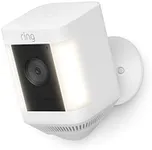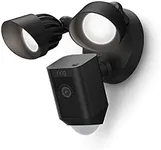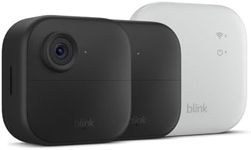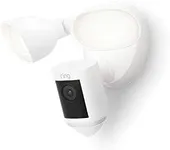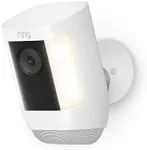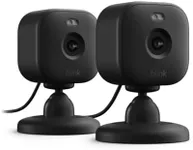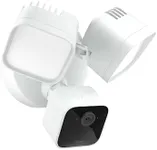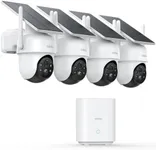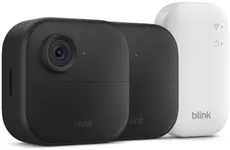Buying Guide for the Best Outdoor Security Cameras
Choosing an outdoor security camera can make a big difference in keeping your home or business safe. There are various types and features available, so understanding what to look for will help you find a camera that suits your needs. Think about where you want to install the camera, what you want to monitor, and how involved you want to be with day-to-day operation. This will help you narrow down options and focus on what really matters for your situation.ResolutionResolution refers to how clearly the camera can capture images and video. Higher resolutions like 1080p or 4K provide sharper and more detailed footage, making it easier to identify faces or license plates. Cameras with lower resolution may result in grainy images that are harder to interpret, especially when zooming in. If you're monitoring a small area or only need general surveillance, a lower resolution might suffice, but for bigger spaces or where detail matters, pick a higher resolution.
Field of ViewField of view shows how much of the area the camera can 'see' at once, usually described in degrees. A wide field of view (over 100 degrees) covers more ground, which is useful for open spaces or to minimize the number of cameras needed. A narrower view focuses more closely on a specific spot, which is ideal if you have a particular entry or pathway to monitor. Choose based on whether you want a broad overview or detailed coverage of a specific area.
Night VisionNight vision is the camera’s ability to see in low light or total darkness. Cameras with good night vision use infrared LEDs to illuminate their surroundings. The effectiveness is usually listed as a range in meters or feet. Basic models might cover only a short distance, while advanced ones can see further into the dark. Pick a camera with a night vision range that matches the area you need to watch after sunset.
Weather ResistanceWeather resistance tells you how well the camera can cope with rain, dust, snow, and extreme temperatures. This is often indicated by an IP (Ingress Protection) rating. IP65, IP66, or higher means the camera is built for outdoor use and can handle tough weather. If your camera will be exposed to the elements year-round, look for a higher rating. If it’s somewhat sheltered, a moderate rating may be enough.
ConnectivityConnectivity refers to how the camera sends its footage to you. Some cameras use Wi-Fi, while others need a cable connection (often called 'wired'). Wireless cameras are easier to install but can sometimes have interference or need strong Wi-Fi coverage. Wired cameras are more stable but require more work during setup. Choose the type based on how accessible power and internet are at your installation spot and your comfort with installation.
Storage OptionsStorage options determine how and where your camera saves its video. Some save footage locally on a memory card, while others upload to the cloud. Local storage means you control the data, but may have limits on how much you can store. Cloud storage can offer more space and backup, but might need a subscription and relies on internet access. Consider how much footage you want to keep and how comfortable you are with external services.
Motion DetectionMotion detection allows cameras to start recording or alert you only when they sense movement. Sensitivity and smart features (such as ignoring animals or cars) differ between models. Basic systems may alert you to any movement, while advanced ones can tell the difference between people, animals, or cars. Think about your environment: more advanced detection helps avoid unnecessary alerts if you have a busy street or lots of wildlife passing by.
Audio CapabilitiesAudio capability refers to whether the camera can record sound or allow you to speak through it. Basic models may not have audio, while others can alert you with sound or allow two-way conversation. If you want to communicate with visitors or warn off intruders, two-way audio is useful. If you only need visual monitoring, this may not be important.
Power SourcePower source indicates how the camera gets its electricity. Some are battery-powered, some plug directly into an outlet, and others can use solar panels. Battery-powered cameras offer flexible placement but need regular recharging or new batteries. Wired cameras are more reliable but need to be near a power source. Consider how often you want to maintain the camera and where you’ll place it, then select the most convenient power method.
